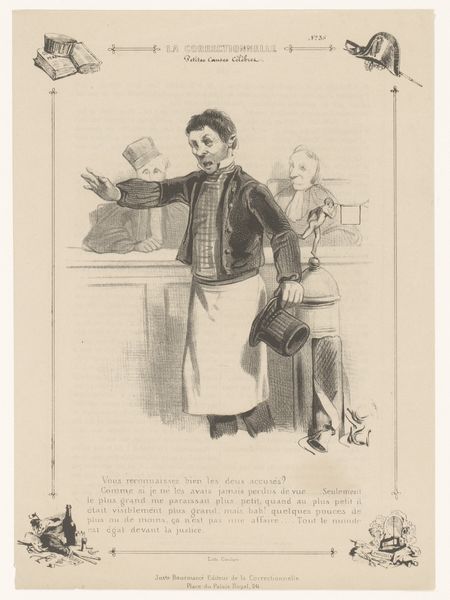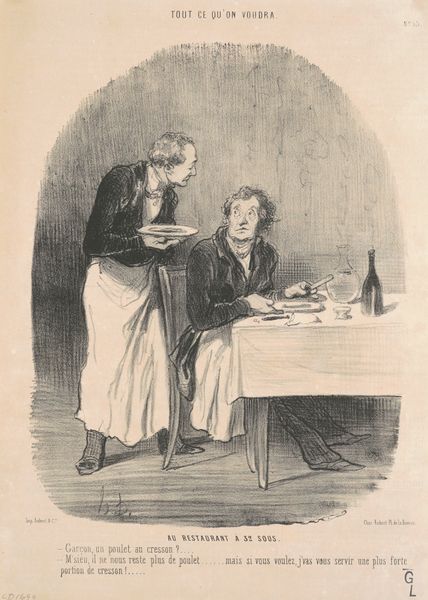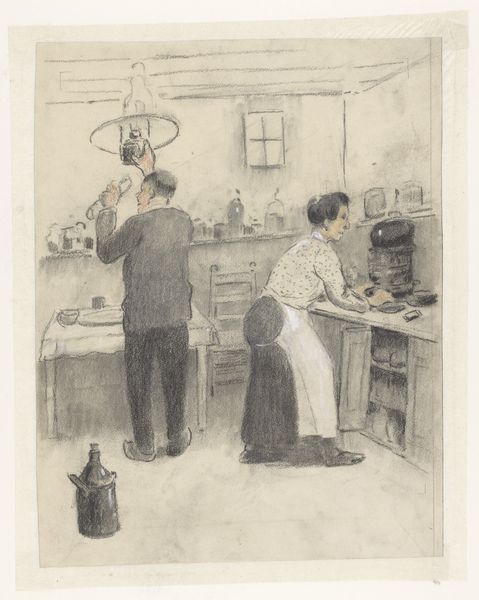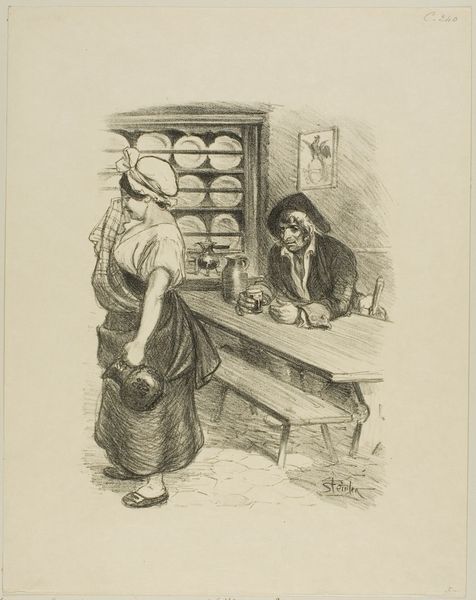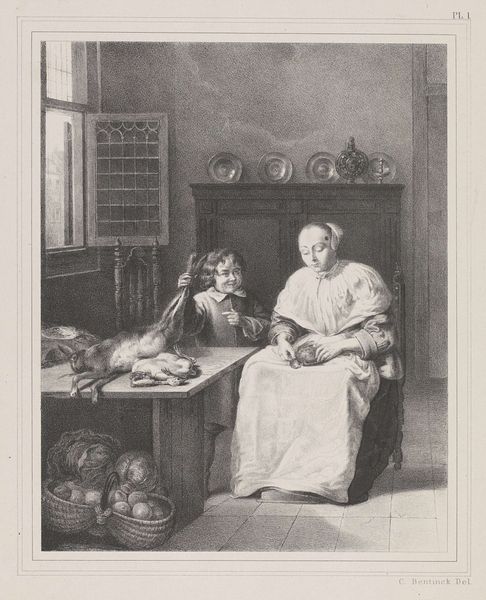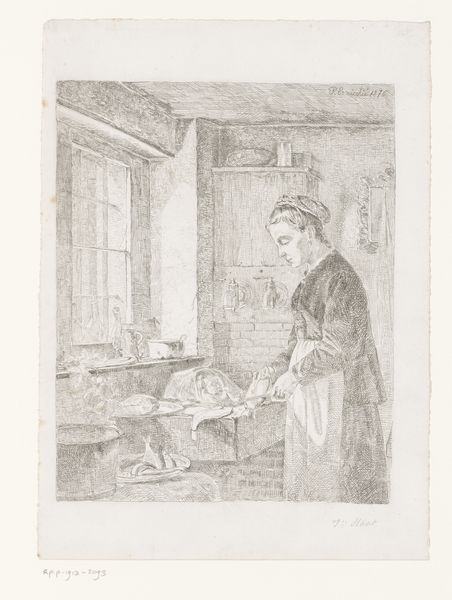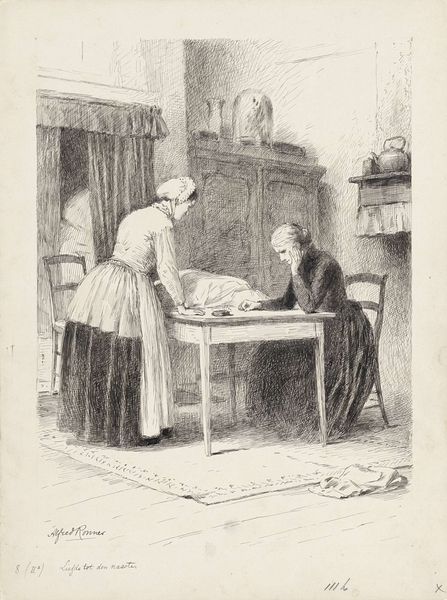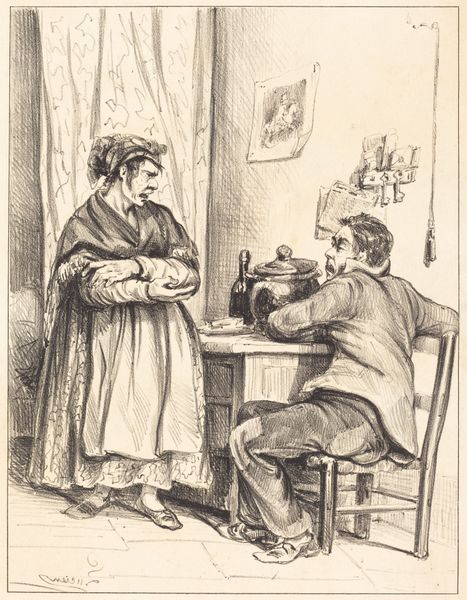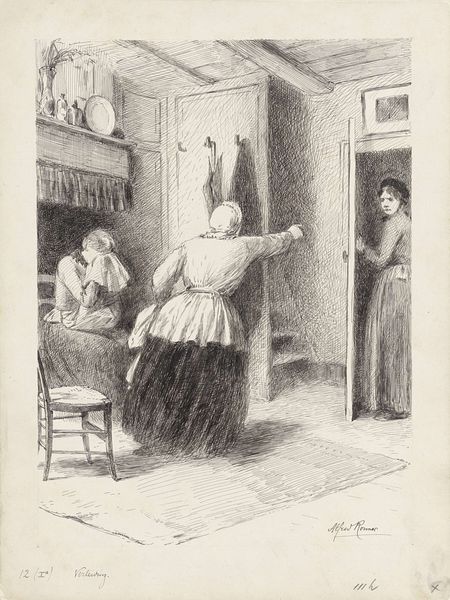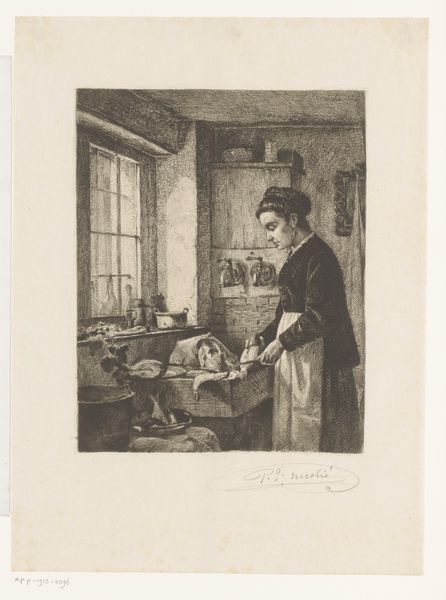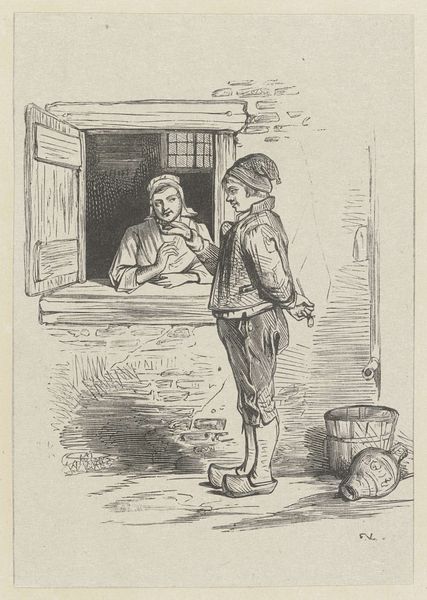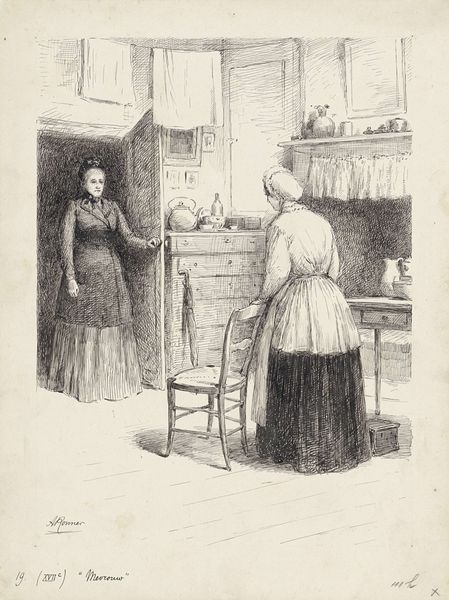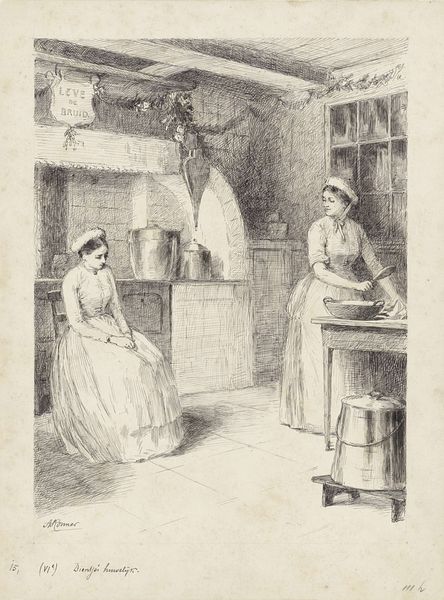
drawing, print, pencil
#
drawing
# print
#
caricature
#
pencil sketch
#
old engraving style
#
caricature
#
historical photography
#
pencil
#
pencil work
Dimensions: height 420 mm, width 313 mm
Copyright: Rijks Museum: Open Domain
Editor: So this is "Spotprent op de bakkerswet," a drawing or print, possibly from around 1910, by Willem Frederik Winter. It’s a black and white image showing two figures in what looks like a bakery. The whole thing has a slightly humorous, old-fashioned feel to it. What stands out to you about it? Curator: The image is a fascinating window into early 20th-century anxieties around food regulation. Note the text, "Bakkerswet," literally the Baker's Law, baked into the loaf itself. Consider that it's being inspected with such scrutiny, this loaf of "law," in essence becomes a symbol of the era's push for standards. And the question it poses is: “Is it half-baked?” This is the symbolic key. Editor: So, the “Bakkerswet” wasn't just about baking; it represented a larger set of standards. Is that what you're saying? Curator: Precisely. Laws gain meaning beyond the words used to define them. Note also that it is the woman doing the inspecting here; does her pose remind you of similar visual tropes? Editor: A little, yes. It feels like something out of a domestic scene… Curator: Perhaps referencing the home economics movement and its focus on female stewardship of food quality. The Church visible outside through the window. Law, home and god – how interesting they all make an appearance together. Editor: I see, that helps connect the dots between the law itself and the social anxieties of the time. Thanks! Curator: And it also challenges us to reflect on how everyday objects can become potent symbols of larger societal shifts. Consider how potent these objects must have been in their day, how people understood what it represented, compared to how we read the image today.
Comments
No comments
Be the first to comment and join the conversation on the ultimate creative platform.

